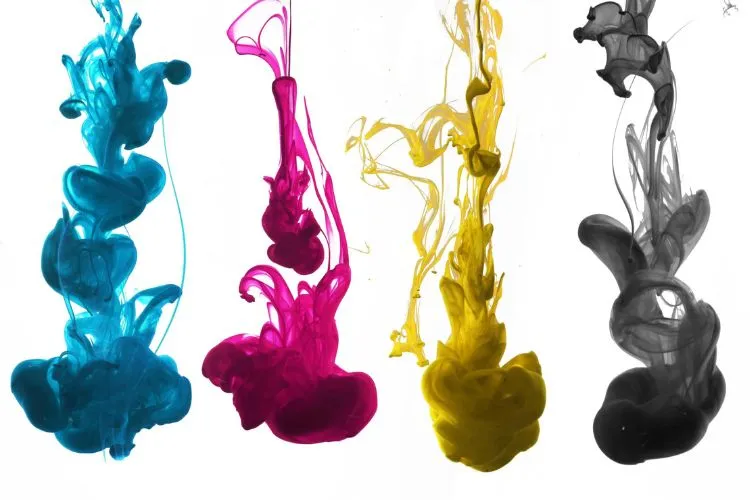In the dynamic world of art, the materials and mediums artists choose are as crucial as the brush strokes they apply. One such material is acrylic paint.
Known for its versatility and durability, acrylic paint has been a staple in the artist’s palette. Questions about its physical properties, particularly its conductivity, have emerged. Is acrylic paint conductive?
This article delves into the science behind acrylic paint and its relationship with electricity.

Is acrylic paint conductive?
The general consensus among scientists and artists alike is that acrylic paint, in its pure form, is not conductive. The key lies in the dried acrylic polymer, which forms a non-conductive barrier, preventing the flow of electrical current.
However, this doesn’t mean that acrylic paint can’t behave as a conductor under certain circumstances. The inclusion of certain additives or conductive materials into the paint can alter its properties significantly.
When discussing the conductivity of acrylic paints, it’s crucial to differentiate between the paint in its wet state and after it has dried.
While wet, the presence of water could enable a minimal degree of conductivity, although it would be inefficient and unreliable for any practical application. Once dried, the absence of a conducive pathway in the acrylic matrix means that electricity cannot easily pass through.
You may also like to know: Is Acrylic Paint Dishwasher Safe?
Understanding Acrylic Paint
Acrylic paint stands out in the artist’s toolkit for its fast-drying nature and versatility. At its core, acrylic paint is composed of pigments suspended in an acrylic polymer emulsion.

What makes it distinct is not just its ability to mimic the appearance of oil and watercolor paints but also its unique composition, which raises questions about its electrical properties.
While the presence of water in its composition might suggest a potential for conductivity, the reality is more complex due to the acrylic polymer, which is generally non-conductive.
Factors that Impact Conductivity
Diving deeper into what affects the conductivity of acrylic paints unveils a landscape where science meets art. Moisture and temperature play critical roles in the conductivity of materials.
Acrylic paint, when exposed to high humidity levels, might exhibit slight conductivity due to the moisture absorbed, albeit insufficient for significant electrical applications.
In the realm of possibilities, conductive additives introduce an interesting angle. Manufacturers and DIY enthusiasts have experimented with incorporating materials such as graphite, copper, and silver flakes into acrylic paint.
These additives can transform the non-conductive nature of acrylic paint into a conductively potent medium, opening up innovative uses beyond traditional painting.
Practical Applications of Conductive Acrylic Paint
The concept of conductive acrylic paint transcends conventional art applications, venturing into the technological and industrial domains. In electronics, conductive paint can serve as a creative and flexible solution for circuitry design, especially in prototyping and decorative applications.

It can also play a role in electro-magnetic interference (EMI) shielding, offering a lightweight and adaptable alternative to traditional materials.
Beyond electronics, the concept of conductive paint holds potential for innovative uses in educational tools, interactive art installations, and even wearable technology.
The ability to draw or paint a functioning electrical circuit opens up exciting avenues for creativity and practical application.
Frequently Asked Questions (FAQs)
How can you make acrylic paint conductive?
By incorporating conductive materials such as graphite powder, copper, or silver flakes into the acrylic paint, you can enhance its conductivity. The proportion and type of conductive material used will significantly impact the paint’s conductive properties.
Are there specific brands of acrylic paint that are more conductive?
Most commercial acrylic paints are designed for artistic purposes and do not possess inherent conductive properties. For applications requiring conductivity, specialized conductive paints that have been formulated with conductive materials are the best choices. These are often explicitly labeled as conductive or have clear indications of their intended use.
Conclusion:
The exploration of acrylic paint and its conductive capabilities offers a fascinating intersection between art and science. While acrylic paint, in its traditional form, is not conductive, modifications through additives can transform it into a medium with potential for electrical applications.
This adaptation demonstrates the versatility and boundless nature of acrylic paints, not just as a medium for artistic expression but also as a component in technological innovation.
In an era where the boundaries between disciplines increasingly blur, the curiosity surrounding materials like acrylic paint reflects a broader desire to understand and innovate.
Whether for artistic endeavors, educational tools, or practical applications, the journey into the conductive properties of acrylic paint illustrates the continuous dialogue between materials and imagination. Let the exploration and creativity flow, for the possibilities are as vast as the canvas of human ingenuity.

Meet Isabella Anderson, your acrylic painting mentor with over a decade of brush-wielding mastery. Dive into the colorful world of acrylics with her expert guidance, featured exclusively on ‘Acrylic Authority.’ Unleash your inner artist and explore the limitless possibilities of this versatile medium alongside a true acrylic aficionado.
